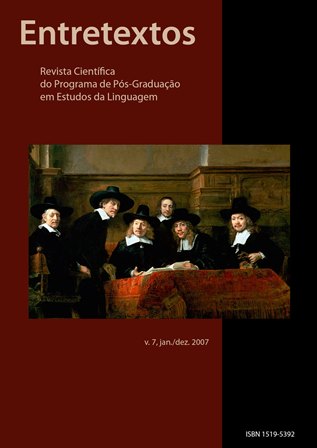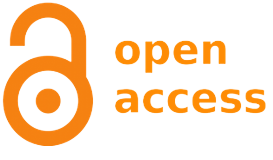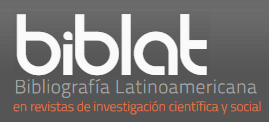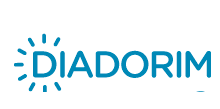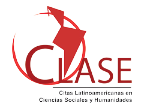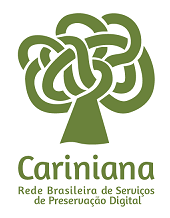Reflections on the influence of the mother tongue in Kaingang learning Portuguese as a second language
DOI:
https://doi.org/10.5433/1519-5392.2007v7n1p42Keywords:
Contrastive linguistics, Error analysis, InterlanguageAbstract
This article aims to present the results of the analysis of part of the data collected for the making of the mastering project of one of the authors above, which is developed at the Programa de Pós-Graduação of Universidade Estadual de Londrina. The data was collected at the bilingual school Luiz Pénky Pereira, which is located at the indigenous area of Apucaraninha, in Leroville, 80 kilometers far from Londrina. The objective of this work is to verify possible influences of the mother tongue Kaingang in the learning process of Portuguese as a second language. The theory adopted to guide this study is the Contrastive Linguistics through the Models of Error Analysis and Interlanguage Analysis.Downloads
References
BORBA, Francisco da S. Pequeno vocabulário de Lingüística Moderna. 2. ed. São Paulo. Companhia Editora Nacional, 1976.132 p.
CORDER, S. PIT La importancia de los errors del que aprende una lengua segunda. IRAL, v. 5, n. 4, p. 32-40, 1967. Trad. do original em inglês The significance of learners erros. Traduzido por J. Muñoz Liceras.
THE STUDY of learner’s language: error analysis. In: Introducing Applied Linguistics. Harmondsworth. Middlesex: Penguin Books, 1973. p. 256-294.
IDIOSYNCRATIC Dialects and Error Analysis. In: RICHARDS, Jack C. Error Analysis. Perspectives on Second Language Acquision. Longman, 1974 , p.158-171.
COSERIU, Eugenio. Teoría del Lenguaje Y Lingüística General. Cinco Estudios. Madrid, Biblioteca Românica Hispânica.Editorial Gredos, 1962. 323 p.
CUNHA, Celso, Gramática Moderna. 3.ed. Belo Horizonte Editora Bernardo Álvares S.A. 1971. 302 p.
DUCROT, Oswald. Estruturalismo e Lingüística. São Paulo: Cultrix, 1970.146 p.
DURÃO, Adja B. de A. B. Análisis de Errores en la interlengua de brasileños aprendices de español y de españoles aprendices de portugués. 2.ed. Londrina: Eduel, 2004. 362 p.
LA INTERLENGUA. Madrid. Arco/Libros, S.L. ,2007. 94 p.
GONÇALVES, Solange Ap. Línguas em contato: Português e Kaingang no Rio Grande do Sul. Uma breve discussão. Biblioteca Virtual da Unicamp. Disponível em: http://www. unicamp.br. Acesso em: 25 maio 2007.
HENRY, Jules. The Kaingang Language. International Journal of American Linguistics, Chicago, vol. 14, 3 194-204 Jul, 1948.
INSTITUTO SOCIO AMBIENTAL ISA. Disponível em: http://www.socioambiental.org/. Acesso em: 25 junho 2007.
LADO, R. La necesidad de una comparación sistemática de lenguas y culturas. In: Lingüística Contrastiva; Lenguas y Culturas. Ediciones Alcala, 1973. pp. 1-9. Trad. Por J. A. Fernández.
NEMSER, W. Los sistemas aproximados de los que aprenden lenguas segundas. IRAL, v. 9, n. 2, p. 51-61. Trad. Do original em inglês Aproximative systems of foreign language learners.115-123, 1971.
ODLIN, T. Earlier Thinking on Transfer. In: ODLIN, T. Language Transfer. Cross-linguistics influence in language learning. Cambridge/New York/ Melbourne, Cambridge University Press, 1989. p. 6-24.
PRETI, Dino. Sociolingüística: Os Níveis de Fala: um Estudo Sociolingüístico do Diálogo na Literatura Brasileira. 7.ed. São Paulo: Editora da Universidade de São Paulo.1994
SELINKER, L. Interlanguage IRAL, v.10, n. 3, p. 80-101. Trad. Do original em inglês Interlanguage.219-231, 1972.
VEZ JEREMÍAS, José Manuel. Aportaciones de la Lingüística Contrastiva. In SÁNCHEZ LOBATO, J.; SANTOS GARGALLO, T; Vademécum para la formación de profesores. Enseñar español como segunda lengua (L2/ lengua extranjera (LE). Madrid: SGEL, 2004.
WARDHAUGH, R. La hipótesis del análisis contrastive. TESOL Quarterly, v. 4, p. 42-49 .Trad. do texto em inglês The contrastive analysis hypothesis 123-136. 1970.
WIESEMANN, Ursula G. Kaingang : Português Dicionário Bilíngüe. Curitiba Editora Evangélica Esperança, 2002. 175 p.
Downloads
Published
How to Cite
Issue
Section
License
Entretextos adota a Licença Creative Commons Attribution 4.0 International, portanto, os direitos autorais relativos aos artigos publicados são do(s) autor (es).
Sob essa licença é possível: Compartilhar - copiar e redistribuir o material em qualquer suporte ou formato. Adaptar - remixar, transformar, e criar a partir do material, atribuindo o devido crédito e prover um link para a licença e indicar se mudanças foram feitas.

